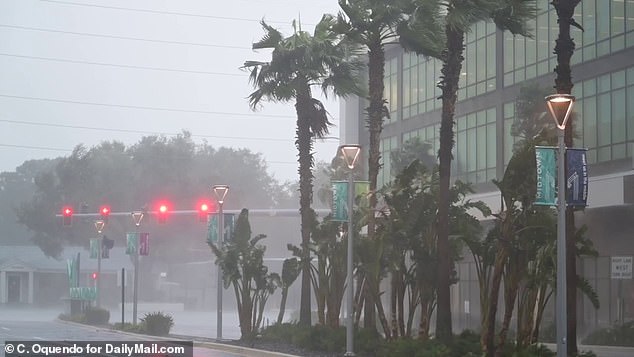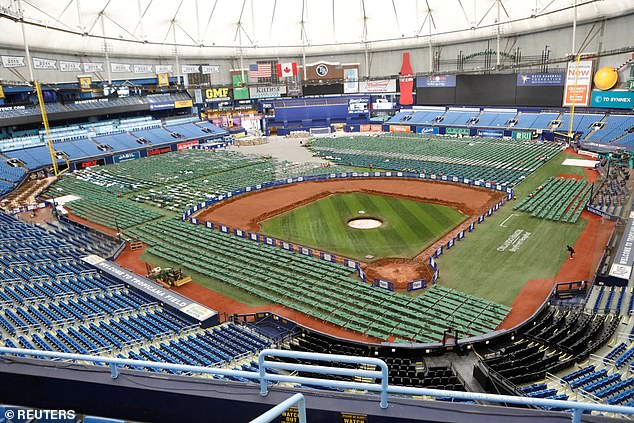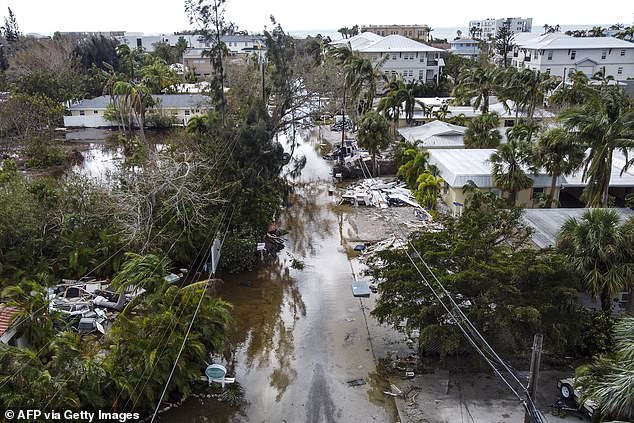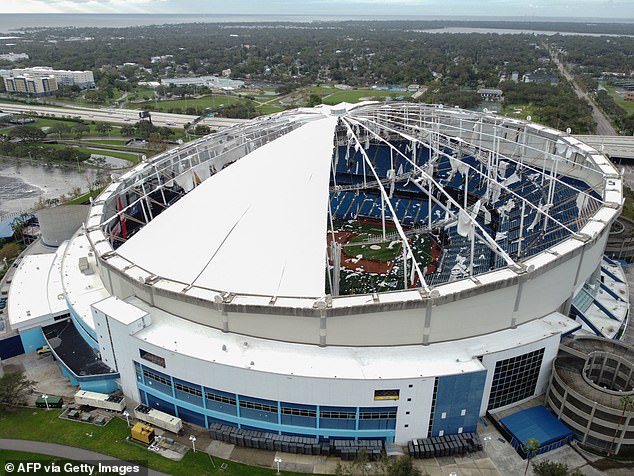The Tampa Bay Rays’ Tropicana Field suffered heavy damage Wednesday night and may not be repaired anytime soon.
Amid the devastating winds of Hurricane Milton, which hit Florida’s Gulf Coast and left at least 13 dead, the roof of the ‘Trop’ was left in tatters.
Now, the organization has said it could take weeks to fully assess the damage done to what the team calls the world’s largest cable-supported vaulted ceiling.
According to the team, the roof was designed to withstand winds of up to 115 mph.
“Over the coming days and weeks, we hope to be able to evaluate the true condition of Tropicana Field,” the Rays said Thursday.
The home of the Tampa Bay Rays has been completely devastated by Hurricane Milton
‘In the meantime, we are working with the authorities to secure the building. We ask for your patience at this time and encourage those who are able to donate to organizations in our community that are helping those directly affected by these storms.’
The team says the roof panels are made of “translucent Teflon-coated fiberglass” supported by 180 miles of cables connected by struts.
The stadium opened in 1990 with an initial cost of $138 million and will be replaced in time for the 2028 season with a $1.3 billion stadium.
However, repairs will now surely be made sooner, as initial images posted on social media showed gaping holes in the vaulted ceiling, with material flapping in the fierce winds.
The team said no one was injured when the St. Petersburg stadium was hit by the storm Wednesday night.
A handful of “essential personnel” were inside Tropicana Field when the roof panels blew off, sending much of the debris falling onto the field and seats below.
The Rays are not scheduled to play in the stadium again until March 27, when they are supposed to host the Colorado Rockies to open the 2025 season.
The Rays’ NFL neighbors, the Tampa Bay Buccaneers, also saw their stadium flooded by Milton.
And the NHL game scheduled for Saturday between the Tampa Bay Lightning and the Carolina Hurricanes was also forced to be postponed.
As of Thursday night, nearly two thousand gas stations were out of fuel and more than 3 million Floridians were without power.
Additionally, about 25% of the state’s nearly 8,000 gas stations are out of gas, and more than 63% in Tampa and St. Petersburg, the cities most affected by the storm.

Hurricane Milton hit Tampa this week while citizens are still dealing with the impact.

The stadium had initially been transformed into a base for first responders before the storm.

A street flooded with debris is seen after Hurricane Milton in Siesta Key, Florida.
As bad as the damage was, the situation at Tropicana Field could have been worse. Florida Gov. Ron DeSantis had said earlier in the week that there were plans for the stadium to serve as a “temporary base camp” to support debris clearing operations and temporarily house some first responders.
“They were relocated,” DeSantis said Thursday morning. ‘Tropicana Field is a routine staging area for these things. The ceiling on that… I think it’s rated for 110 mph and that’s why the forecast changes, but when it became clear that there was going to be something of that magnitude that was going to be within range, they redeployed them out of Tropicana. . There were no state assets inside Tropicana Field.’
Milton was downgraded to a Category 3 storm before hitting Siesta Key around 8:30 p.m. local time Wednesday, according to the National Hurricane Center.
It then crossed Central Florida, causing flooding and strong winds, before traveling over the Atlantic Ocean, where it will dissipate.

